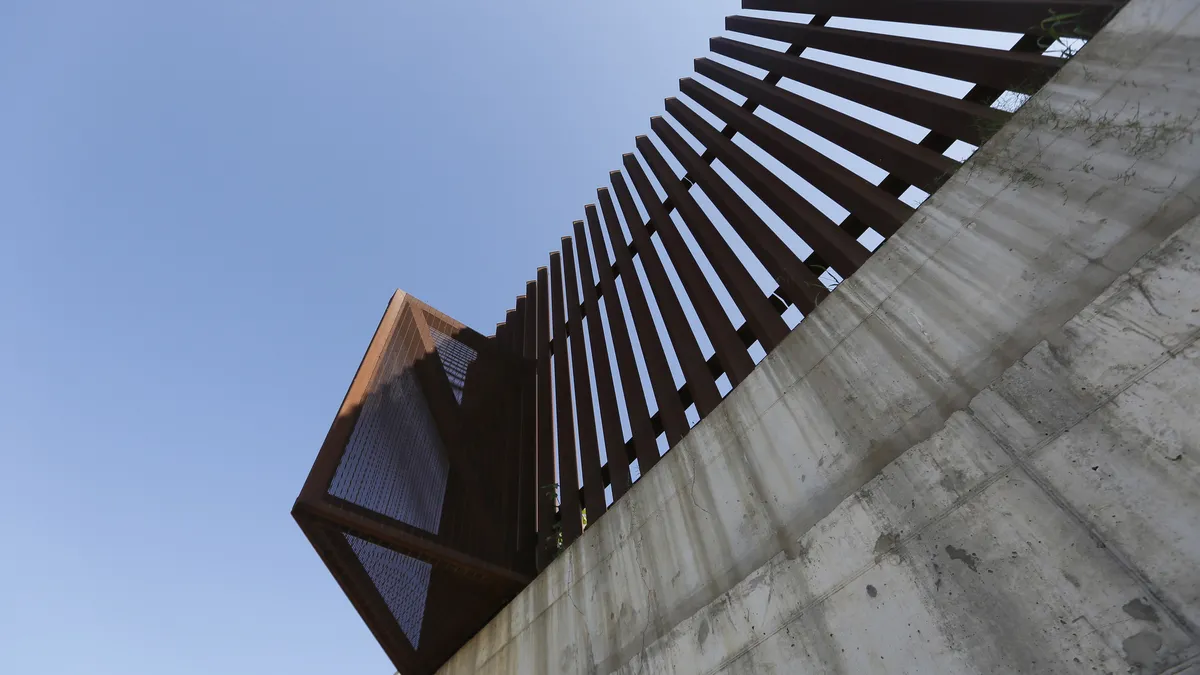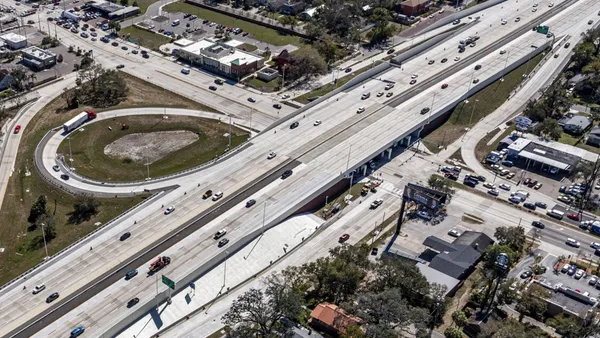Dive Brief:
-
During a Department of Defense briefing, Jonathan Hoffman, assistant to the secretary of defense for public affairs, said that the U.S. military will transfer a total of $3.6 billion to the Department of the Army so that it can build 11 wall segments along the U.S-Mexico border. Defense Secretary Mark Esper has determined that the selected wall projects are necessary to support the use of armed forces at the border under President Donald Trump's national emergency declaration.
-
The DoD is deferring $1.8 billion of military construction projects planned for outside the U.S. and $1.8 billion planned within the U.S. and its territories in order to come up with the necessary border wall funds. Reiterating previous statements from DoD personnel, the 127 deferred military projects, Hoffman said, do not include family housing, barracks or dormitory projects; projects that already have been awarded; or projects that are expected to be awarded in fiscal year 2019.
-
Ken Rapuano, assistant secretary of defense for homeland defense and global security, said that the wall projects represented 175 miles of barrier replacement and new construction.
Dive Insight:
Hoffman said that even though some projects are considered replacements, all wall construction funded through the military will add to the Department of Homeland Security's ability to prevent illegal entry into the U.S. He added that the money will only be handed over to the Army on an as-needed basis to meet the department's obligations on the projects.
The projects that will be paid for by the military are:
- Yuma Project 2 ($40 million): 1.5 to 2 miles of primary replacement fencing.
- Yuma Project 10/27 ($527 million): Approximately 31 miles of new secondary pedestrian fencing.
- Yuma Project 3 ($630 million): Replacement of 31 miles of vehicle barriers, along with new pedestrian fencing, through the Cabeza Prieta National Wildlife Refuge.
- San Diego Project 4 ($67 million): 3.5 miles of new primary and secondary pedestrian fencing.
- Yuma Project 6 ($65 million): Approximately 3 miles of new primary and secondary pedestrian fencing.
- El Paso Project 2 ($476 million): Three segments (23.5 miles) of vehicle barriers and some new pedestrian fencing in two New Mexico counties.
- El Paso Project 8 ($164 million): Approximately 12 miles of new primary and secondary pedestrian fencing.
- San Diego Project 11 ($57 million): Approximately 3 miles of a new secondary pedestrian fence system.
- El Centro Project 5 ($20 million): Approximately 1 mile of a new secondary pedestrian fencing.
- Laredo Project 7 ($1.3 billion): Approximately 52 miles of new primary pedestrian fencing along the Rio Grande River.
- El Centro Project 9 ($286 million): Approximately 12 miles of new secondary pedestrian fencing.
As for the deferrals abroad, they represent projects from Cuba to Europe to Asia and include storage warehouses, airfield infrastructure, fleet maintenance and training facilities, as well as administrative offices and elementary school replacements on military installations. In the U.S. and its territories, 64 projects were canceled for the time being, including a National Guard readiness center, utility maintenance and repairs, ambulatory care center improvements on military installations, access roads, a fire station replacement and schools on military installations. The largest canceled project was for $95 million for a U.S. Military Academy engineering center in New York.
In order to hurry wall construction along, DHS is likely to waive the standard environmental regulatory requirements, just as it has done for previous border wall and fencing projects in the last few years. The department regularly sets aside laws like the Clean Water Act in furtherance of the project, although the government maintains it is making every effort to be environmentally responsible.
The president's desire to fulfill one of his primary campaign promises, according to The Washington Post, reportedly has led him to extend promises of pardons to staff members who violate the law in their efforts to expedite construction of the wall before the 2020 election. However, Trump has vehemently denied this accusation.
The move to use billions of dollars in military funds for border wall construction is bound to stoke even more controversy around the project, which has seen the administration's decision to use DOD money win an initial legal battle at the Supreme Court.
One potential surprise for activists is that despite assurances from Customs and Border Protection that wall construction will not take place in the Santa Ana Wildlife Refuge, maps of proposed wall segments seem to indicate that one piece of wall will be built near the protected area. The 2,088-acre refuge is home to 400 types of migratory birds and other species, including one-half of all butterfly species found in the U.S.












